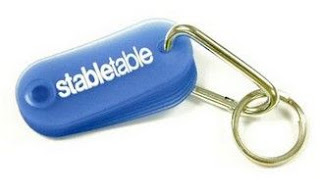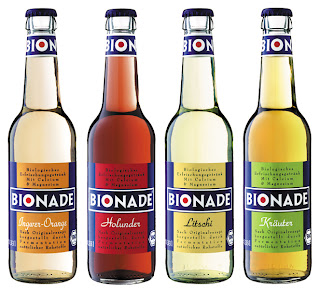http://www.myinergy.com/Launch date: October 2005
Business: Stress-relief and self-improvement centres
Target: Build 11 more centres within three years
Diagnosis: The founder needs more proof of concept and the right valuation to attract sufficient investment
It's been a tough day at work, so you make a stop on the way home. No, not at the bar or even the gym, but the Inergy Mind Spa. You pick out an iPod-equipped leather recliner, slip on headphones and dark glasses, and immerse yourself in a relaxing, multi-sensory experience. Music plays and lights flicker as a soothing voice tells you that you have what it takes.
Twenty minutes and $20 later, you're refreshed and relaxed, eager to get home to spend quality time with the family. And you can't wait to go back to work tomorrow.
This is the vision of Rene Messier, a real estate and franchising veteran—and a hypnotherapist and motivational speaker—who is now on a quest to expand Inergy Mind Spa Centers into 100 cities across North America. And talk about the power of positive thinking: he's doing it from Kamloops, B.C.
So far, Messier has one spa operating, a storefront "self-improvement centre" at the Sahali Centre Mall, just down the hall from Safeway and the dollar store. Opened in October 2005, the spa is the testing ground for his theory that consumers will pay big bucks to beat stress, lose their bad habits and build self-esteem through Inergy's simple, proprietary programs. Besides the 20-minute "mind spa," which offers pre-programmed therapies or an invigorating power nap, Inergy sells a range of three- to nine-month programs. No diets, no formulas, no herbs: Inergy combines a form of hypnotherapy with neurolinguistic programming—the emerging science of changing behaviour by planting attitude-shifting ideas into your head while you're in an open-minded, trance-like state—to help customers lose weight, quit smoking, sleep better or overcome pain and depression. At $577 to $2,377, the programs are priced below the cost of most gym memberships or self-help programs run by competitors such as L A Weight Loss Centers.
You might think that Kamloops, a laid-back, blue-collar city, would make a tough test site. But Messier says he's uncovered a torrent of troubles among Kamloops' citizens, with more than 280 lawyers, housewives, civil servants and teens signing up for courses such as Stressless Living, Sensible Sleep and Restrain the Pain. In fact, so many people demanded mental-health shortcuts that Messier had to devise a new program, Accelerated Self-Improvement.
"We have affirmed that people are yearning to recharge," says Messier. "I knew there was a need, but stress is afflicting many, many more people than I thought. We're realizing an epidemic of stress."
One happy customer is Terry Farrell, 60, an artist and writer in Kamloops. He paid $1,100 last fall for a 14-week course called Interactions to fight the negativity that ruled his life. A few months later, he is now publishing his historical novel, which sat on a shelf for 15 years, and he's had a three-week show at a local art gallery, which resulted in his first sale of a painting in five years. The program "brought me back," he says. "It helped me get over the negative chatter in my head and stick to what I want to get accomplished."
Messier's Kamloops "laboratory" is still losing about $10,000 a month—but he isn't stressing about it. By grossing $165,000 in its first year in a market of just 90,000 people, Messier believes his test site proved that a big-city Inergy centre could gross $1 million a year. "We've done our experimentation and now we know what works," he says, so now he's focusing on raising funds to build 11 more.
The immediate goal is to raise $1.25 million to build 11 centres in Alberta, B.C., Washington state and Portland, Ore., within three years. The next centre will likely be in Calgary—although Messier says a Brooklyn psychiatrist is lobbying Inergy to open a mind spa in New York. Messier estimates each centre will cost about $275,000 to set up and equip (including the waterfall in the foyer). But since he forecasts each big-city centre will become cash-flow positive within 15 months, he says each outlet will quickly finance the next.
Messier's background proves he's no stranger to change. A former Calgary real estate developer, he took over a bankrupt Vancouver outlet of Maaco Auto Painting & Collision and made it Canada's No. 1 Maaco outlet. In turning around two other struggling franchises, Messier became friends with Maaco Canada president Terry Lough, who became his business mentor. Winning numerous Maaco awards for leadership and sales, Messier moved into motivational speaking. Then, three years ago, Lough asked him to come to Kamloops to try something new.
Lough's son had bought a franchise in Positive Changes Hypnosis Centers of Dublin, Ohio, which pioneered behaviour modification through personal coaching and hypnosis. Lough asked Messier to help run the business, which was stumbling. "We knew there was a great concept here," says Messier. But Positive Changes' parent company was emerging from receivership, and, he says, it was weak on business systems. He spent a year turning the Kamloops office around and was ready to expand to nearby Kelowna before Lough died suddenly of pneumonia in May 2005. Unable to agree on future directions with Lough's son, Messier left to launch Inergy.
After 18 months of operation, Messier thinks he has an investor-ready pitch. With minimal inventory required and 70% of the services automated, he expects Inergy to produce an 85% gross margin and a hefty 30% net profit. With 12 centres, he expects that a 50¢ share in Inergy today will be worth at least $6.50. By Year 5, he hopes that Inergy will be a public company, with 100 centres across North America.
But selling those 50¢ shares has proven tougher than expected. First, Messier found that to raise money from private individuals, he needed to create a formal offering memorandum (OM) laying out the nature of the opportunity. "I came upon the incredible red tape of private fundraising," he says. "We've created a whole industry of lawyers and accountants, and dealing with them is worse than trying to raise the money." Most would-be service providers offered to produce an OM for $70,000. But Messier found a Kamloops lawyer who did the job for less than $10,000.
Messier says he's had a lot of investor interest and a few cheques—but not enough. "We lost six weeks with one group that wanted the whole piece," he says. But they, like others, backed off until Messier can demonstrate a profitable centre. He is also trying to penetrate angel groups in Calgary and Vancouver, but, he notes, "These people are so hard to get to."
To help raise money, Messier recruited Doren Quinton, president of Kamloops-based QIS Capital Corp. and a "guru" among small-cap investors in Western Canada (from March 2003 to December 2006, his portfolio of junior stocks grew 443%). Now an Inergy director and investor-relations advisor, Quinton says Western Canadian investors have been spoiled by recent big gains in resource stocks: "With Inergy, you might just get a 1,000% return, but it's three years away. I don't think investors are thinking that long-term right now."
If the funds aren't found soon, Quinton says, Inergy may have to review its valuation. The OM values the company (post-investment) at $5 million—75% of which is Messier's share, based on his development work and personal investment of about $600,000. Quinton admits some investors found that steep: "If they think they're not getting in on the ground floor, then we may need to bring the valuation down."
Messier defends the math, saying his personal experience, especially with Positive Changes, has taught him so much. Plus, he created business processes and information systems that put him in control. "I'm fanatical about management systems," says Messier. "If you're going to franchise your business, you have to have duplicatable systems." He knows, for instance, that walk-in customers are "dramatically" less likely to buy programs than those who respond to an ad. That knowledge helped him determine that future centres can locate in stand-alone sites rather than paying the premium rents in malls.
Another lesson learned in Kamloops: how to market. In its first year, Inergy spent $60,000 on advertising, learning what works and what doesn't. "Print is for education and TV is for credibility," says Messier. "Direct mail is for incentivizing a call to action, and radio is for reinforcement." (Coupons didn't work at all.) He says Kamloops' small size helped Inergy learn these lessons cheap: "We would have paid $400,000 in marketing in Calgary in 12 months to figure out what we found out in Kamloops."
Messier is already keen on product extensions, from programs narrated by celebrities, such as professional golfers, gold-medal athletes and nationally known therapists, to "Inergy chairs" in airports and airlines handing out Inergy "helmets" to stressed-out passengers.
But one future that's still fuzzy is franchising. After Inergy builds a dozen company-owned outlets, it may open more through limited partnerships rather than franchises. "With an 85% gross margin, I'm not sure we want to franchise," says Messier. "We'll get these 12 centres open, prove we can manage them effectively and efficiently, and then we can make our decision."
61 Stars Removed From Walk of FameFreeHandAd.Com - How To Make Money Giving Away Something For Free






